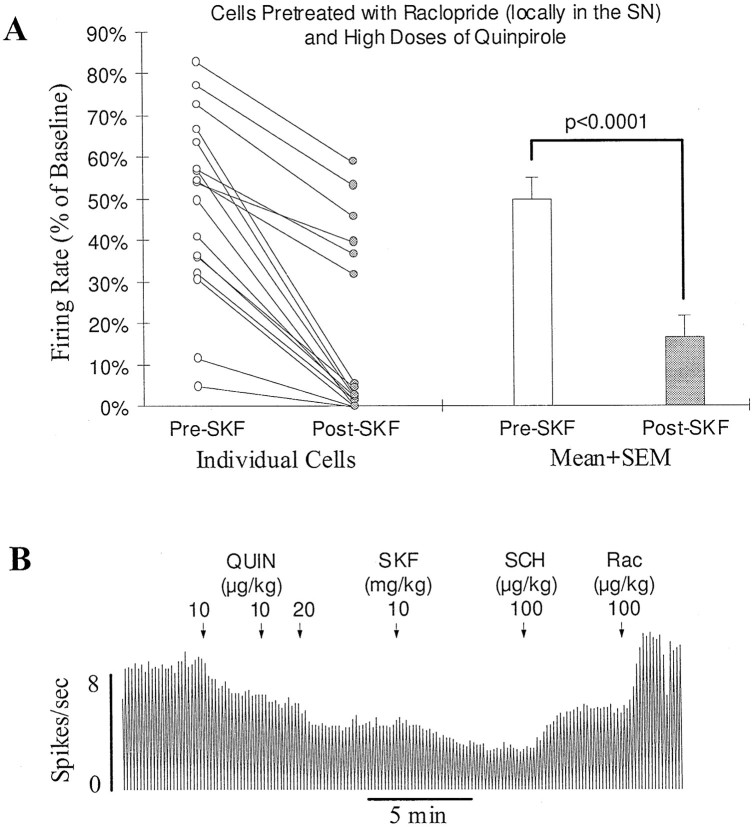Fig. 4.
D1-mediated feedback inhibition persists after DA autoreceptors are blocked. A, Graph showing inhibition by the D1 agonist SKF38393 of DA cells with blocked DA autoreceptors. Before testing for the D1 response, raclopride was introduced locally just above the SN (2–8 μg) to block DA autoreceptors, and high doses of quinpirole (40–640 μg/kg, i.v.) were administered to activate D2-like receptors on DA target neurons. Open andfilled circles represent the firing rate of individual cells before and after SKF38393 injection (5–10 mg/kg, i.v.), respectively. In 17 of 18 cells, SKF38393 produced a clear further inhibition. On average, the firing rate was reduced significantly from 47.9 ± 5.1 to 16.1 ± 5.1% of baseline (openand filled bars; p < 0.0001;n = 18). B, Typical rate histogram showing the inhibition by SKF38393 of an SN DA cell treated locally with raclopride (8 μg). A cumulative dose of 40 μg/kg of quinpirole (QUIN) produced a 50% inhibition of firing. Injection of SKF38393 (SKF) produced a clear further inhibition. The D1 antagonist SCH39166 (SCH) reversed the inhibition induced by SKF38393. The D2 antagonist raclopride (Rac) brought the activity back to baseline.

